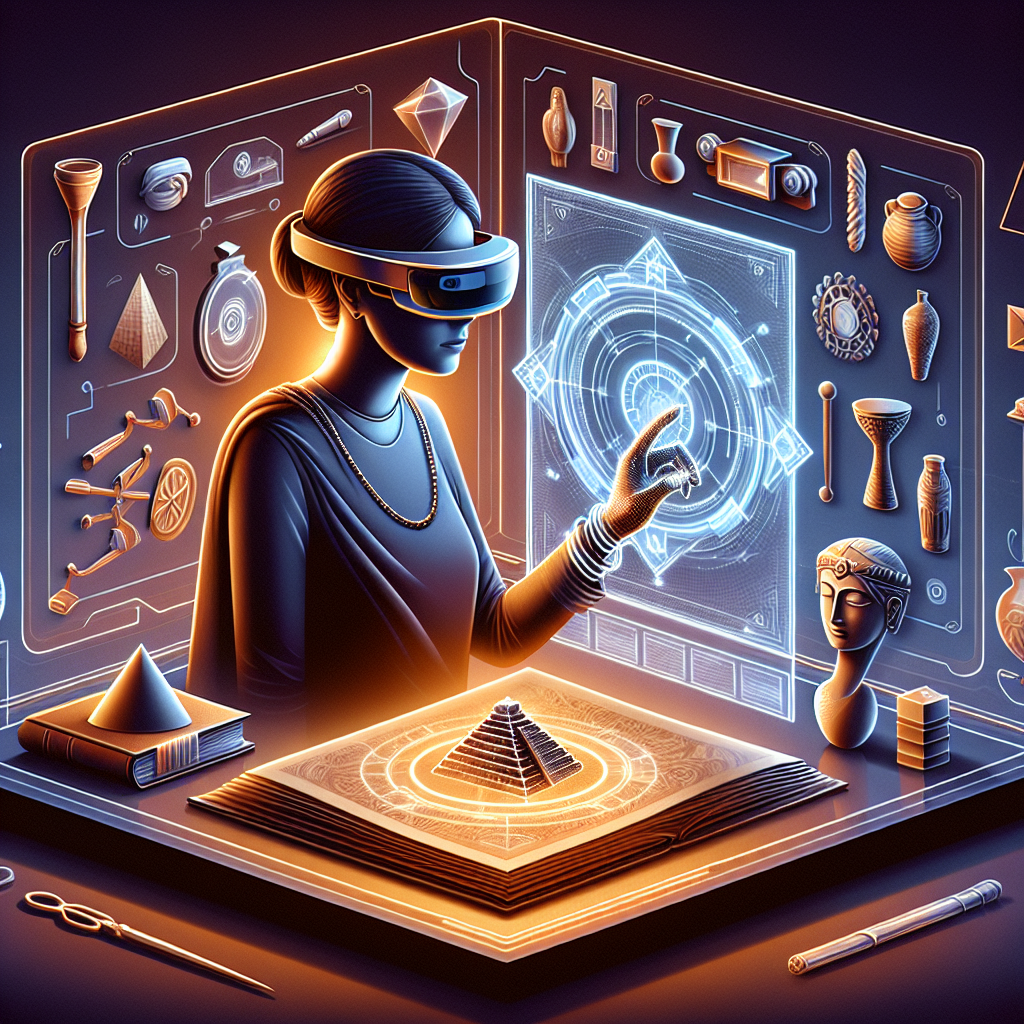Augmented Reality (AR) technology is revolutionizing the way we interact with the world around us, and one of its most exciting applications is in the preservation and presentation of cultural heritage. From museums to historical sites, AR is providing new ways for visitors to engage with and learn about the past. In this article, we will explore the innovative applications of AR in preserving and presenting cultural heritage, and how this technology is shaping the future of experiencing our shared history.
AR technology overlays digital information on top of the physical world, creating a composite view that blends the real and virtual. By using smartphones, tablets, or AR glasses, users can see interactive graphics, videos, and animations that enhance their understanding and appreciation of historical artifacts and landmarks.
One of the key benefits of AR is its ability to bring history to life in a way that is engaging and memorable. For example, AR can be used to create interactive 3D models of ancient buildings or monuments, allowing visitors to explore them in their original form. This can provide a more immersive and educational experience than simply reading a plaque or looking at a static image.
AR can also be used to create virtual tours of museums and historical sites, giving visitors the opportunity to explore at their own pace and dive deeper into the stories behind each artifact. By providing additional context and information through AR overlays, visitors can gain a deeper understanding of the significance and cultural importance of each object.
Another innovative application of AR in preserving cultural heritage is the use of augmented reality storytelling. By creating immersive narratives that guide visitors through exhibits or historical sites, AR can transport them to different time periods and help them connect with the people and events of the past. This can make history more relatable and accessible to a wider audience, including children and those with limited mobility or disabilities.
AR can also be used to restore and preserve fragile or damaged artifacts digitally. By creating high-resolution 3D scans of objects, museums and preservationists can document and study them in detail, while also creating virtual replicas that can be displayed to the public. This not only helps to protect the original artifacts from wear and tear but also makes them more accessible to a global audience.
In addition to its educational and preservation benefits, AR can also be used to promote cultural heritage tourism and generate interest in historical sites. By creating interactive AR experiences that highlight key landmarks and attractions, destinations can attract more visitors and provide a unique and memorable experience that sets them apart from competitors.
Overall, the innovative applications of AR in preserving and presenting cultural heritage are helping to bridge the gap between the past and the present, making history more engaging and accessible to a new generation of digital-savvy visitors. As this technology continues to evolve, we can expect even more exciting developments in the way we interact with and experience our shared cultural heritage.
—
FAQs:
Q: How does AR work in preserving cultural heritage?
A: AR technology overlays digital information on top of the physical world, creating a composite view that blends the real and virtual. By using smartphones, tablets, or AR glasses, users can see interactive graphics, videos, and animations that enhance their understanding and appreciation of historical artifacts and landmarks.
Q: What are some examples of AR applications in cultural heritage preservation?
A: Some examples of AR applications in cultural heritage preservation include creating interactive 3D models of ancient buildings, offering virtual tours of museums and historical sites, using AR storytelling to guide visitors through exhibits, and digitally restoring and preserving fragile artifacts.
Q: How does AR benefit cultural heritage tourism?
A: AR can benefit cultural heritage tourism by creating interactive experiences that highlight key landmarks and attractions, attract more visitors, and provide a unique and memorable experience that sets destinations apart from competitors.
Q: How can museums and preservationists use AR to document and study artifacts?
A: Museums and preservationists can use AR to create high-resolution 3D scans of objects, document and study them in detail, and create virtual replicas that can be displayed to the public. This helps to protect fragile or damaged artifacts and makes them more accessible to a global audience.
Q: What is the future of AR in preserving and presenting cultural heritage?
A: The future of AR in preserving and presenting cultural heritage is bright, with continued advancements in technology and new applications being developed. As AR continues to evolve, we can expect even more innovative ways to engage with and experience our shared history.
